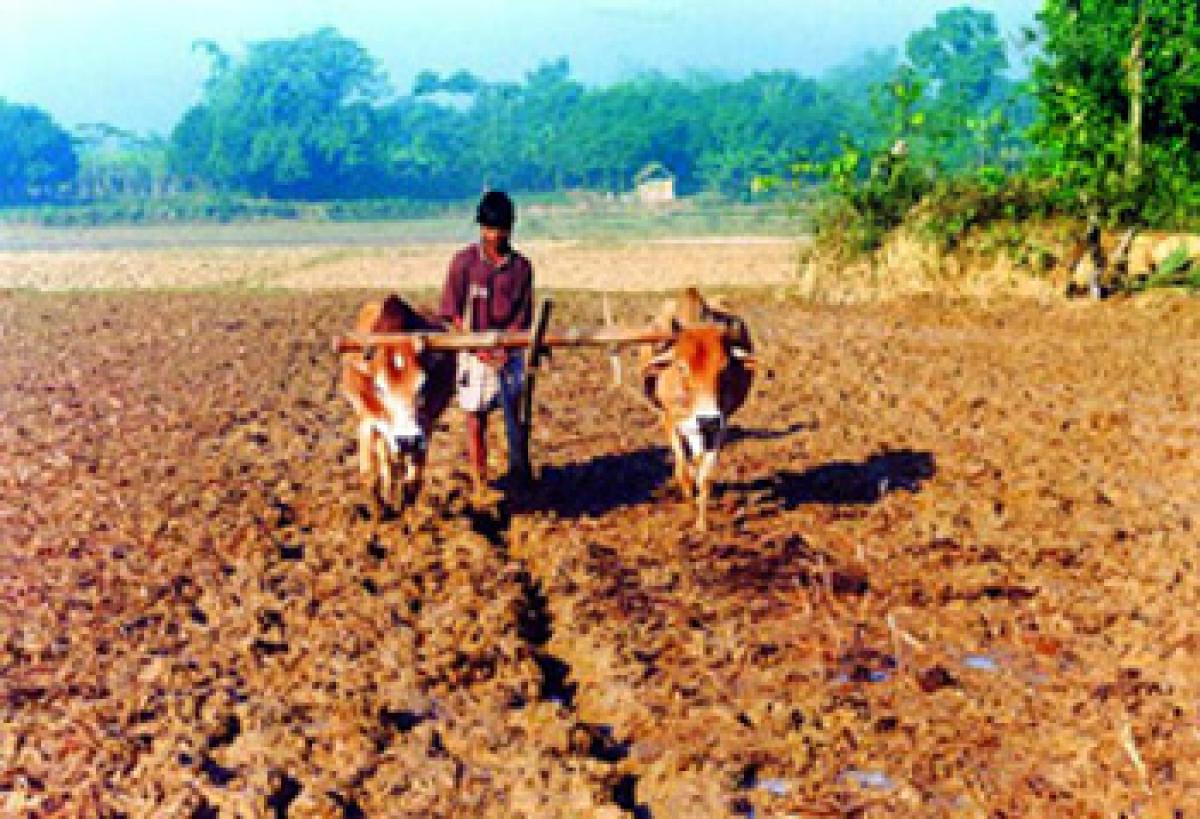Live
- Meal deals remain a consumer favorite in APAC
- Some people trying to spread venom in society in name of caste: Modi
- Flights may soon have new rules for cabin baggage
- Top 5 Exciting Car Launches in January 2025: What to Expect
- Youth must unite and collectively wage a war against corruption
- Six Indian Americans take oath as members of US House of Reps
- Bejan Daruwalla’s horoscope
- A heartful awakening
- TS apprehensive about AP’s Banakacherla project
- Minister Durgesh launches Mid-Day Meal programme
Just In

Agriculture continues to be the major source of livelihood for millions of rural folk in India. Thus, the looming agricultural crisis is adversely affecting the livelihoods of these sections of rural India. The worst affected are the landless agricultural labour.
Agriculture continues to be the major source of livelihood for millions of rural folk in India. Thus, the looming agricultural crisis is adversely affecting the livelihoods of these sections of rural India. The worst affected are the landless agricultural labour.
Agricultural labour was 39 .3 per cent of the rural worker population in 2011. The changing rural employment structures reveal a trend towards proletarianisation of the economy.
The census data reveal a decrease in the absolute number of cultivators in India from 12.73 crore in 2001 to 11.86 crore in 2011. On the contrary, the number of agricultural workers in the same period rose from 10.67 crore to 14.43 crore.
This differentiation occurs at a time when the share of agriculture in the national income is declining indicating greater pauperisation of these masses. The growing number of agricultural workers in a crisis ridden sector reveals the failure of the Indian economy to diversify itself to provide gainful employment in nonfarm rural sectors.
The studies reveal that a large number of these agricultural workers come from marginalised social groups like dalits and tribal’s indicating the intimate relationship between still prevailing social and economic exclusion.
This also reveals the fact that the affirmative action envisaged in the positive discrimination enshrined in the Constitution has not yet provided remunerative job markets to the socially marginalised in an adequate measure.
The large labour force far in excess of employment opportunities is resulting in unfreedom for agricultural workers. Any feeble attempt to release them from this unfreedom is facing tough resistance from the beneficiaries of such an unfreedom for manual workers. The opposition to jobs guarantee scheme signifies this.
Despite many rural employment schemes the official data itself reveals that underemployment continues to pervade rural work force. According to 2011 census, 40.3 per cent of agricultural labourers are marginal workers having employment for less than six months in a year.
On the other hand, only 24.8 per cent of all workers in India are marginal workers revealing the fact that higher underemployment prevails among agricultural workers. The National Sample Survey data on rural labour enquiry reveal declining availability of rural employment in the recent years.
Besides, employment uncertainties due to seasonal factors, natural disasters like drought or floods further compounds the plight of agricultural labourers as they have no income surpluses to rely upon.
Significantly high prevalence of poverty, malnutrition among agricultural workers is a result of wages not meeting the basic consumption requirements. The collapse of public sector education and health care coupled with higher levels of food inflation disproportionately impact agricultural workers.
There is a trend towards feminisation of agrarian labour. But, this is more due to men diverting to more remunerative work. The absence of equal pay for equal work deprives women of the gains of this change. Besides, the women workers face the triple threat of social oppression, economic exclusion, and gender violence.
The migrant workers have woebegone stories to offer. The advent of contract system is excluding older workers. The lack of access to land denies the agricultural labour social esteem. Thus, these sections constitute the most deprived millions of rural India who still await a social opportunity and economic development.

© 2024 Hyderabad Media House Limited/The Hans India. All rights reserved. Powered by hocalwire.com







